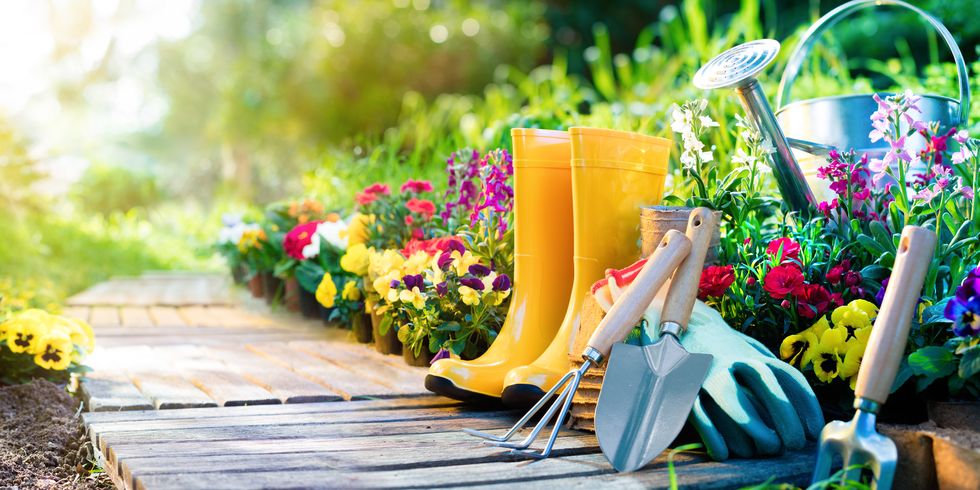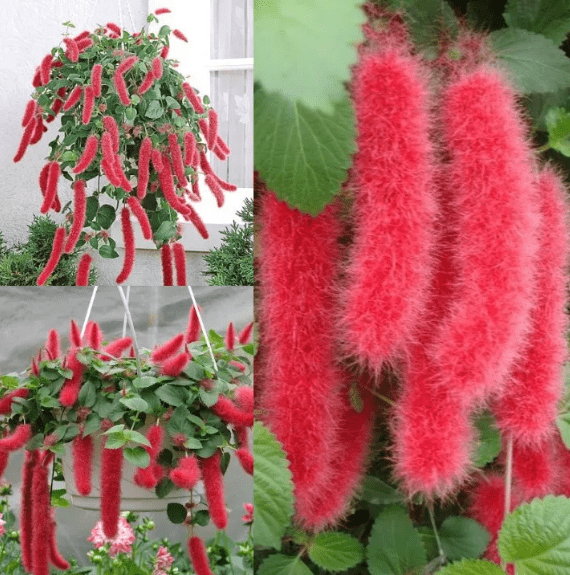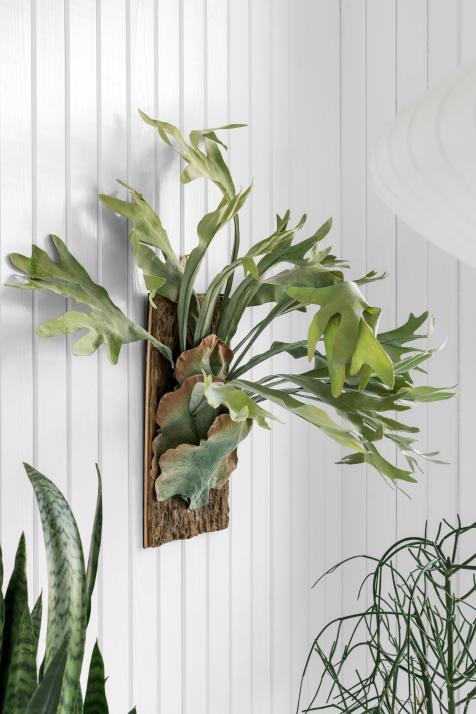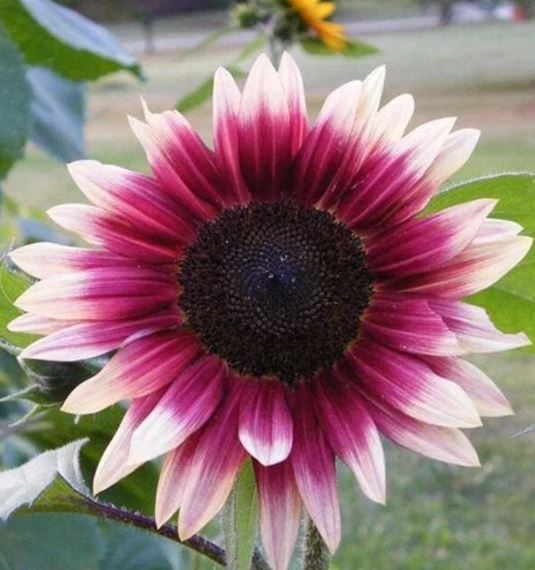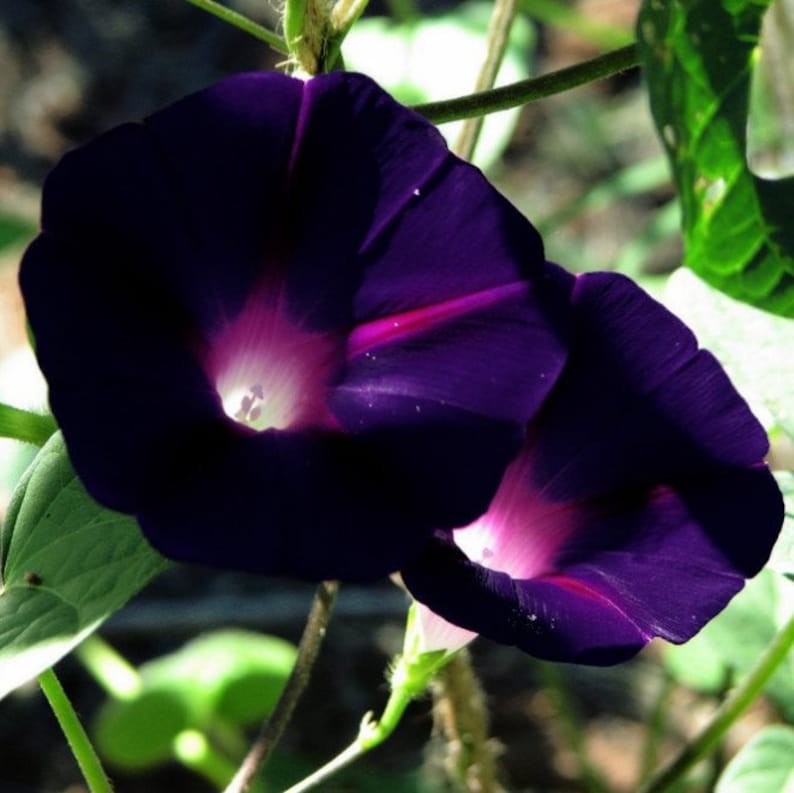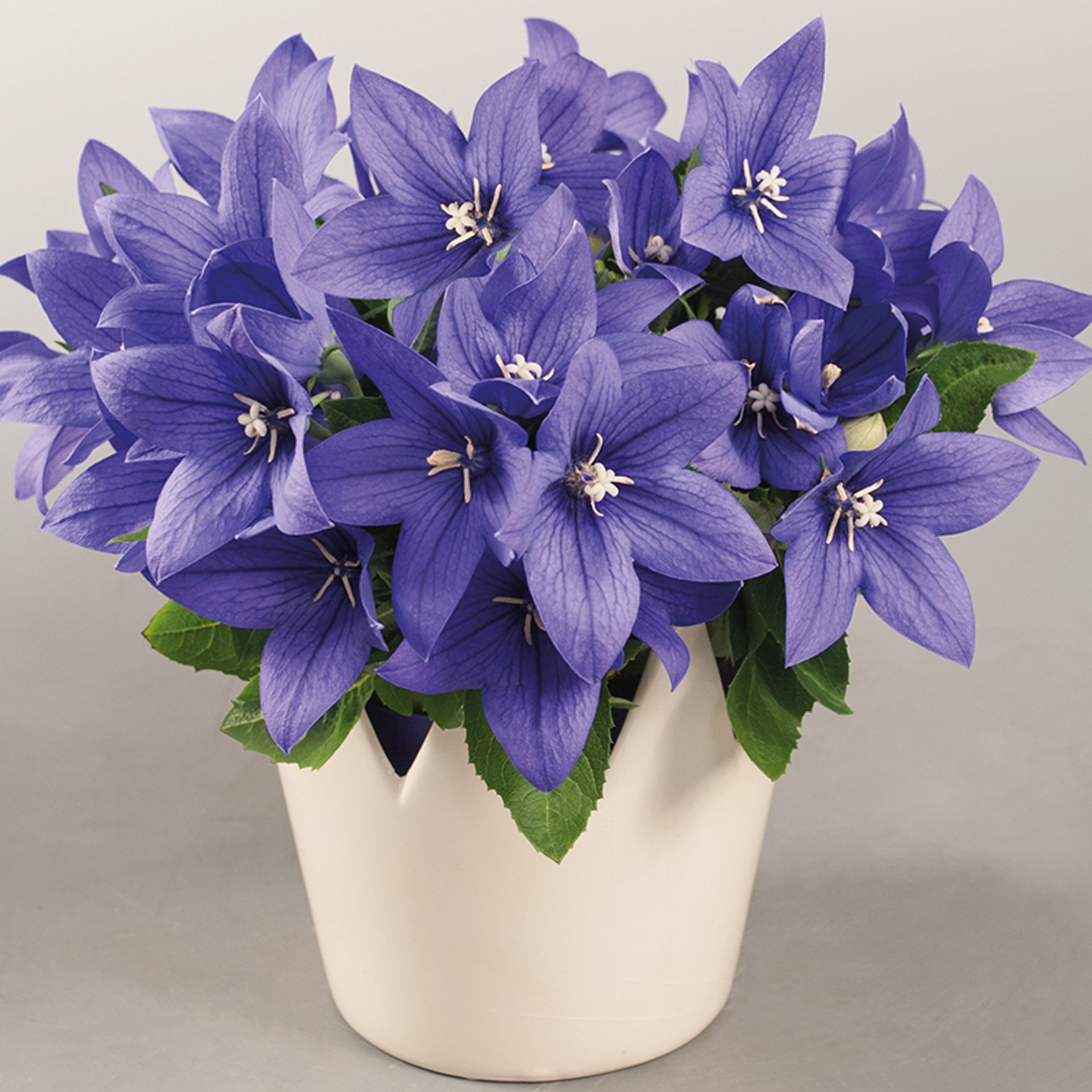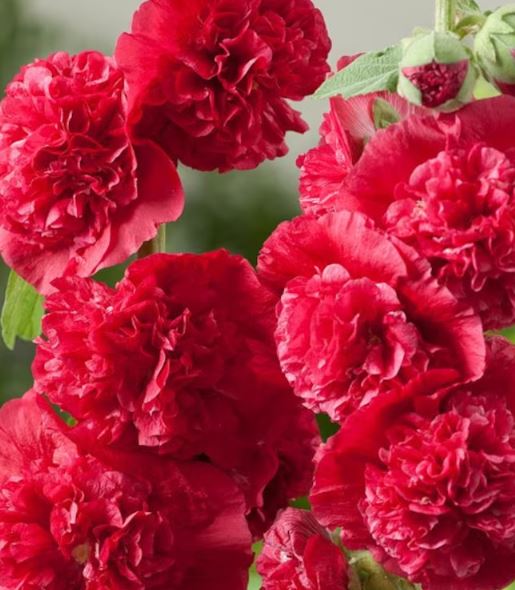
Red Hollyhock
When it comes to adding a burst of color and elegance to your garden, few flowers can match the charm and allure of the Red Double Hollyhock. With its vibrant red petals and towering height, this perennial plant is sure to make a statement in any landscape.
Originating from the Mediterranean region, the Red Double Hollyhock, scientifically known as Alcea rosea, has been a favorite among gardeners for centuries. Its impressive height, reaching up to 6 feet or more, makes it an ideal choice for creating a dramatic focal point in gardens or as a backdrop for other plants. The tall, sturdy stems of the Red Double Hollyhock also make it a great choice for providing vertical interest in the garden.
One of the most distinctive features of the Red Double Hollyhock is its beautiful double flowers. The petals of this variety are densely packed, creating a lush and full appearance. The vibrant red color of the flowers adds a touch of drama and sophistication to any garden setting. These stunning blooms not only attract humans but also serve as a magnet for butterflies, bees, and other pollinators, making the Red Double Hollyhock a valuable addition to any pollinator-friendly garden.
In terms of care, the Red Double Hollyhock is a relatively low-maintenance plant. It prefers full sun but can tolerate partial shade, making it adaptable to various garden conditions. It also thrives in well-drained soil and requires regular watering to keep its roots moist. As a perennial plant, the Red Double Hollyhock will come back year after year, bringing joy and beauty to your garden without much effort.
Step-by-Step Care Guide
1. Planting:
When it comes to planting red double hollyhocks, choosing the right location is crucial. These plants prefer full sun, so select a spot in your garden that receives at least six to eight hours of direct sunlight each day. Additionally, make sure the soil is well-draining and rich in organic matter. Prepare the soil by loosening it with a garden fork or tiller, and remove any weeds or rocks.
2. Watering:
Proper watering is essential for the healthy growth of red double hollyhocks. While these plants are relatively drought-tolerant, they still require regular watering, especially during dry spells. Water deeply, saturating the soil around the base of the plant, rather than lightly sprinkling the leaves. Aim to keep the soil consistently moist, but not overly saturated, as waterlogged roots can lead to root rot.
3. Fertilizing:
To promote vigorous growth and abundant blooms, it’s important to feed your red double hollyhocks with a balanced fertilizer. Apply a slow-release granular fertilizer in early spring, just as new growth appears. Follow the manufacturer’s instructions for application rates, and avoid over-fertilizing, as this can lead to excessive foliage growth at the expense of blooms.
4. Pruning:
Regular pruning helps maintain the health and shape of your red double hollyhocks. In early spring, before new growth emerges, remove any dead, damaged, or diseased stems. Additionally, consider cutting back tall stems by about one-third to encourage bushier growth and prevent the plant from becoming top-heavy. Deadheading spent blooms throughout the growing season will also encourage continuous flowering.
5. Pest and Disease Control:
While red double hollyhocks are generally resilient, they can be susceptible to certain pests and diseases. Keep an eye out for common garden pests like aphids, slugs, and snails. If you notice signs of pest infestation, take appropriate measures such as using organic insecticides or manually removing the pests. To prevent diseases, ensure proper air circulation around the plants by spacing them adequately and avoiding overhead watering.
6. Winter Care:
Red double hollyhocks are generally hardy perennials, but providing some winter care can help protect them from harsh conditions. In late fall, after the first frost, cut back the stems to about six inches above the ground. Apply a layer of mulch around the base of the plant to insulate the roots and protect them from freezing temperatures. Remove the mulch in early spring when new growth begins.
How long doees it take for hollyhocks to bloom?
The time it takes for hollyhocks to bloom varies depending on various factors, including the specific hollyhock variety, environmental conditions, and care provided.
Hollyhocks typically take around 1 to 2 years from the time of planting to bloom. The exact timing can vary depending on various factors such as growing conditions, climate, and the specific variety of hollyhocks.
In the first year after planting hollyhock seeds or young plants, they usually establish their root systems and develop foliage but may not produce flowers. During this time, the plant focuses on building a strong foundation for future growth and flowering.
In the second year, hollyhocks generally start to bloom. They usually produce tall flower stalks adorned with large, colorful flowers. The exact timing of the blooming period can depend on the specific variety and environmental conditions, but it typically occurs in the summer months.
It’s worth noting that some hollyhock varieties are biennials, which means they complete their life cycle in two years, while others are short-lived perennials. Biennial hollyhocks will bloom in the second year and then die off, while perennial varieties can continue blooming for multiple years.
Proudly powered by WordPress


